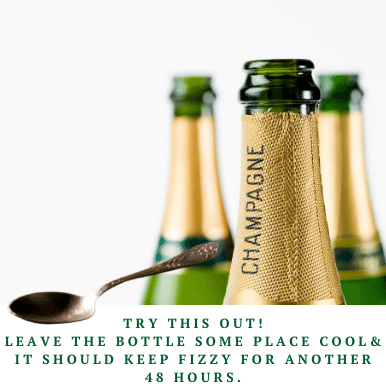Let's make sure no wine Gets left behind. Let's eliminate Wine Waste!
Do you currently have a bottle of white wine, with a dribble at the bottom, that’s been loitering in your fridge for weeks?
Maybe there’s often a glass or two left in a box of red?
You’re not alone!
According to Springer.com: The UK alone wastes 40,000 tonnes of wine each year. Not only is this a huge waste of a consumable, it’s the equivalent to almost 100,000 tonnes of greenhouse gas emissions from drink that ends up down the drain.
There are financial ramifications, too: In the United States alone, it’s estimated that home consumers pour over $1.27 Billion dollars worth of wine down the drain per year.
In the restaurant industry, 18+ million bottles are wasted per annum (artwinepreserver).
And the Beverage Information Services found that the service industry lost 11-15% of profit due to wine oxidation.
Additionally:
So there you have it: Wine waste isn't great for the environment (considering the resources used to make it), nor is it good for your wallet.
With that: Here are some tips and tricks to help you use up all of that bottle of pinot ... all the way down to the very last drop!
Tip #1: The teaspoon method!
This writer is a big fan of a glass of bubbly. I do understand, however that Champagne (or Prosecco) is a divisive drink … it’s the kind of like the Marmite of alcohol.
For those times where I can’t convince my partner to have the last dribble in a bottle (because I couldn’t bare to see alcohol go to waste): I use the teaspoon method!
If you haven’t heard of this trick, it’s pretty simple! You put a teaspoon (handle down) into the neck of the bottle.
According to GrubStreet, the metal from the spoon helps to cool the air inside the bottle which makes the air more dense. The denser air acts like a blanket on the wines surface which prevents bubbles escaping. Voila!

With this science in mind, there is a more technical (and most probably more effective!) product called “Private Preserve”. It is a nitrogen gas that you spray a couple spurts into your wine bottle after you’ve enjoyed some. The gas is heavier than oxygen, so it forms a barrier on the surface of the wine!
– Thanks to The Wine Shoppe for this tip!
Tip #2: Don't Let that Merlot go! Cooking with old red wine:
I know, I know: You’re supposed to use top-quality wine in your cooking. But if you have a nice bottle of wine that’s on the cusp of oxidization, I’d say get creative in the kitchen over slugging it down the drain.
While most kitchen-whizzes know that you can add red wine to gravy or to a pasta sauce, did you know that you can also use red wine as a marinade for seitan? Or in cookies?
One Green Planet have a list of 10 Zazzy Vegan Recipes Cooked With Red Wine which you can see here!
TOP GREEN TIP from The Wine Shoppe on Park:
“You can freeze leftover wine in an ice cube tray or small container to use later for making marinade for steak, broth for cooking foods like a pot roast, or make French onion soup and wherever else your recipe calls for wine!”
This is a great tip if you have wine leftover and don’t feel like cooking anytime soon!
Tip #3: Whisk it Good!
Before I horrify some of you with this tip: As you may have guessed … I’m no Sommelier.
I do try to pretend I know what I’m up to. When I buy wine, I opt for a mid-priced organic and vegan bottle (though I have been known to dabble with a $7 bottle or, two).
A side note: Did you know that some wines aren’t vegan? During the fining process (where fine bits of seed, vine and ruffage are sifted out of the wine (in layman’s terms)), fining agents are used. They are usually made of one of four kinds of animal protein: egg whites, gelatin, casein – which is derived from milk, and isinglass – obtained from the swim bladder of fish. You can learn more about this here.
I digress … whisking!
A friend of mine introduced me to this hack … and it works! If you’ve bought a bottle of red that’s so-so … try whisking it with a mini-whisk or a milk-frother. Heck, put it in your blender if you like.
Here’s why this works: You’ll have heard about leaving your wine to breathe. This method quickly adds air to the glass. I did a little Ecosia-ing and found the team at Thriller tested this method and found success, too!


Author
Stephanie Ward
Stephanie started her journey towards a sustainable lifestyle young: at the age of 12, she started a ‘compost bin’ in a margarine container — and left it for her mum to find under the sink many weeks later … Needless to say, her eco-skills have improved since then! A vegan of 10+ years, a staunch animal welfare advocate, and an avid recycler, you’re most likely to find her on a hike, or in the garden.
Join Our Email Community
Gain exclusive access to green trends, tips, and tricks when you sign up for our free newsletter. Enter your email to join our community of changemakers!
Tip 4: A Wine Mother!
If you’re not familiar with Kombucha you’ll currently be scratching your head.
A wine … mother?!
If you have received a nice bottle of wine, but you’re no wine drinker, you could turn it into red wine vinegar for cooking and salad dressings. To do this, you’ll need a ‘starter’ aka A wine mother.
There’s a little bit of a process to this and you’re best to do it in the warmer summer months. I’ve included a link here which has step-by-step instructions.
Making red wine vinegar truly means there’s no wine waste!
Tip 5: Decant!
This GREEN TIP is from Random Acts of Green business member, The Wine Shoppe on Park in Peterborough, Ontario:
“To not let your wine go to waste, buy a half sized bottle, fill it with a full bottle and add an air tight stopper. The half full bottle can be enjoyed over the next 3 days, while the sealed other half bottle can stay good up to 2 months as long as the stopper is a tight fit! There’s no need to refrigerate either!”
The Wine Shoppe stock half-sized bottles, air tight stoppers and the Private Preserve nitrogen gas mentioned earlier.
A green tip on the consumption of wine: A great way to bypass the transportation emissions from hauling and shipping individual bottles is to make your own wine or to bottle it on site! Find out more about bottling your own, at the button below.
Tip 6: A Fruit Fly Trap
Did you know that fruit flies are attracted to fermentation?
This is why you’ll find them hovering around your vegetable patch in the summer, and by your fruit bowl indoors. This is also why red wine makes for a great Fruit Fly trap.
If you leave a splash of red wine in the bottom of the bottle, mixed with some dish soap, you have your very own DIY trap.
However, I truly am a ‘wouldn’t harm a fly,’ type-person and so I did a little research.
As with most creatures, great and small … everything has a place. Recent studies have suggested that Fruit Flies are beneficial insects. They eat decaying matter that may turn into a food source for rodents, or become a fungal or bacterial infection.
I’m going to leave this tip up to your discretion!

What To Do With Leftover Wine:
If you’ve opened a bottle of wine and you really don’t care for it:
- Make Sangria.
- Mull it.
- If you have a friend or co-worker who you know likes wine, offer it to them!
If you’re looking for a sustainably produced wine, visit our members at Brooks. They’re champions of sustainability when it comes to vino!
Do you have any wine waste tips? Let us know!
Are you on a waste-free mission? Check out this blog post for some scary stats on Food Waste in Ontario.
leftover white wine recipes
what to do with oxidized wine
More Blog Posts:

Sustainable LGBTQ Owned Brands and Organizations To Support For Pride Month (and beyond!)
Sustainable LGBTQ owned Businesses to support! Learn about the connection between this community & their inclusion in the environmental movement.

The Guide to Veganuary!
Whether you are going full vegan or starting to eat less meat, our guide to veganuary will help you go plant-based in 2023.







